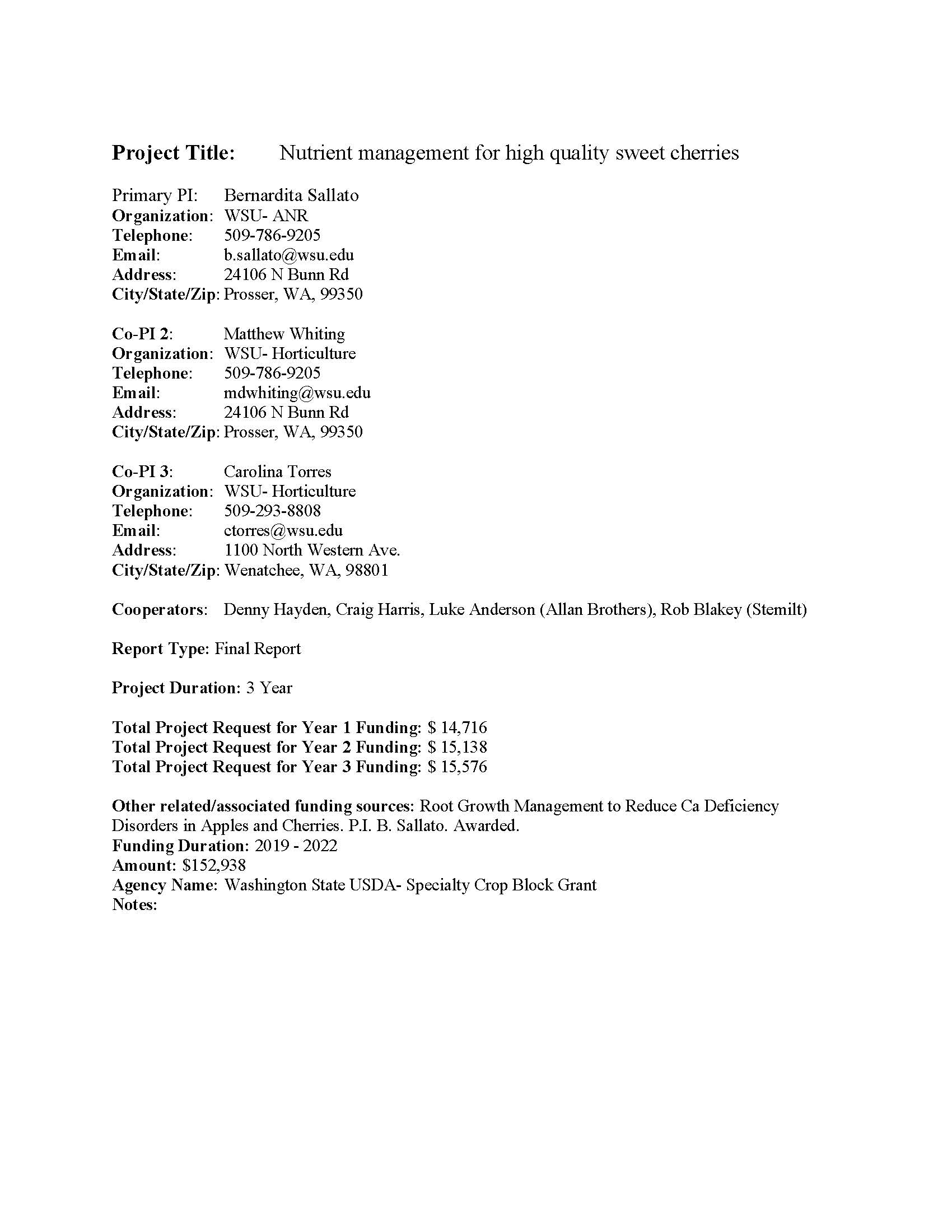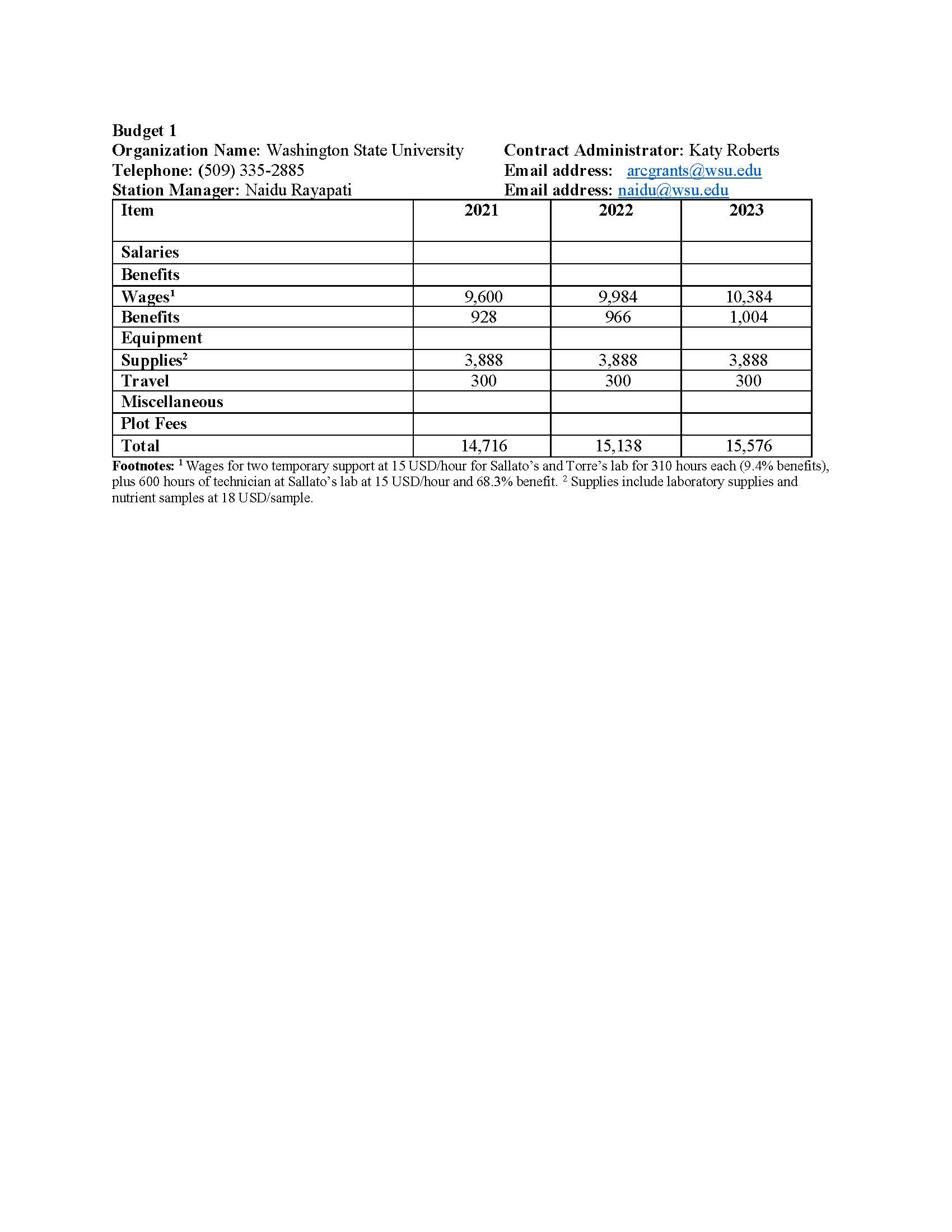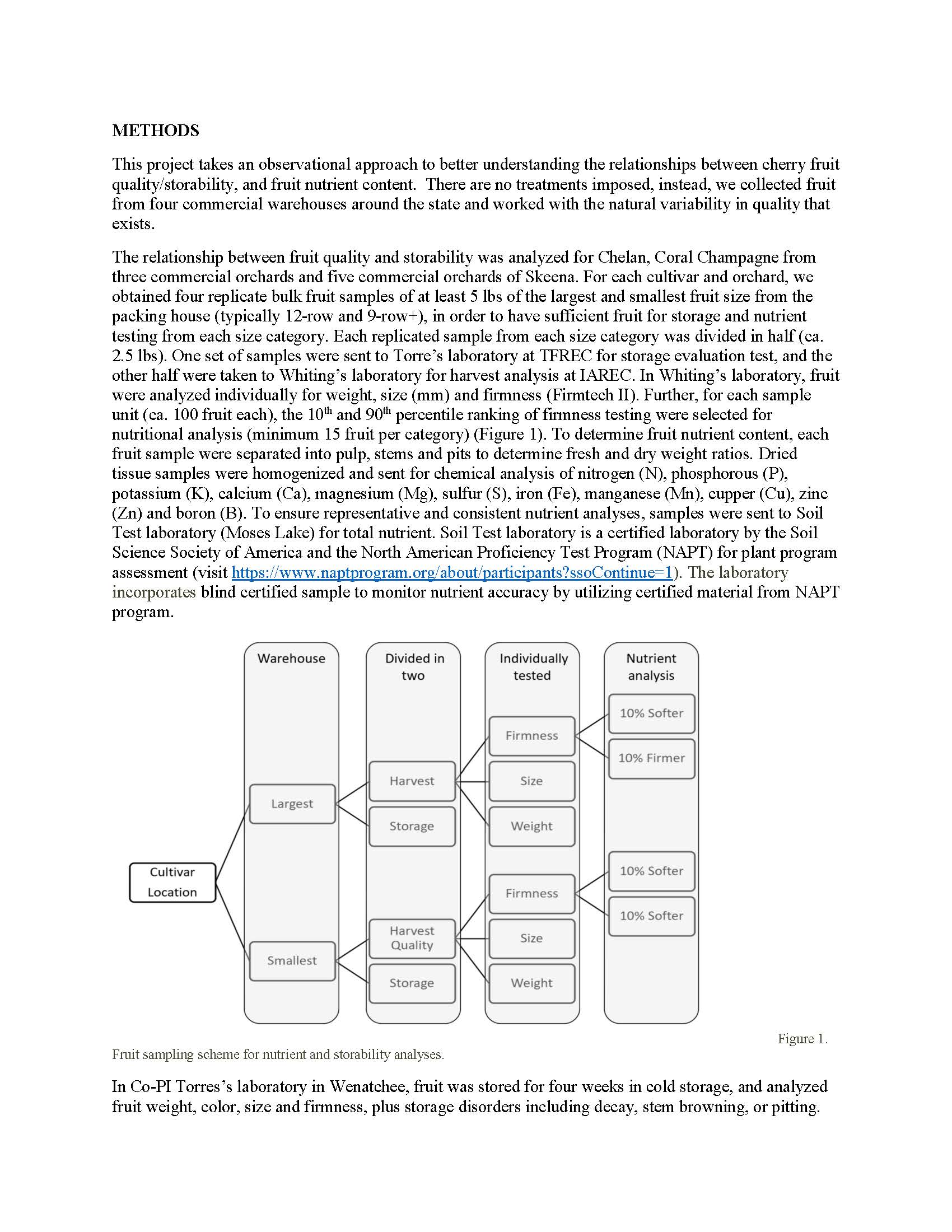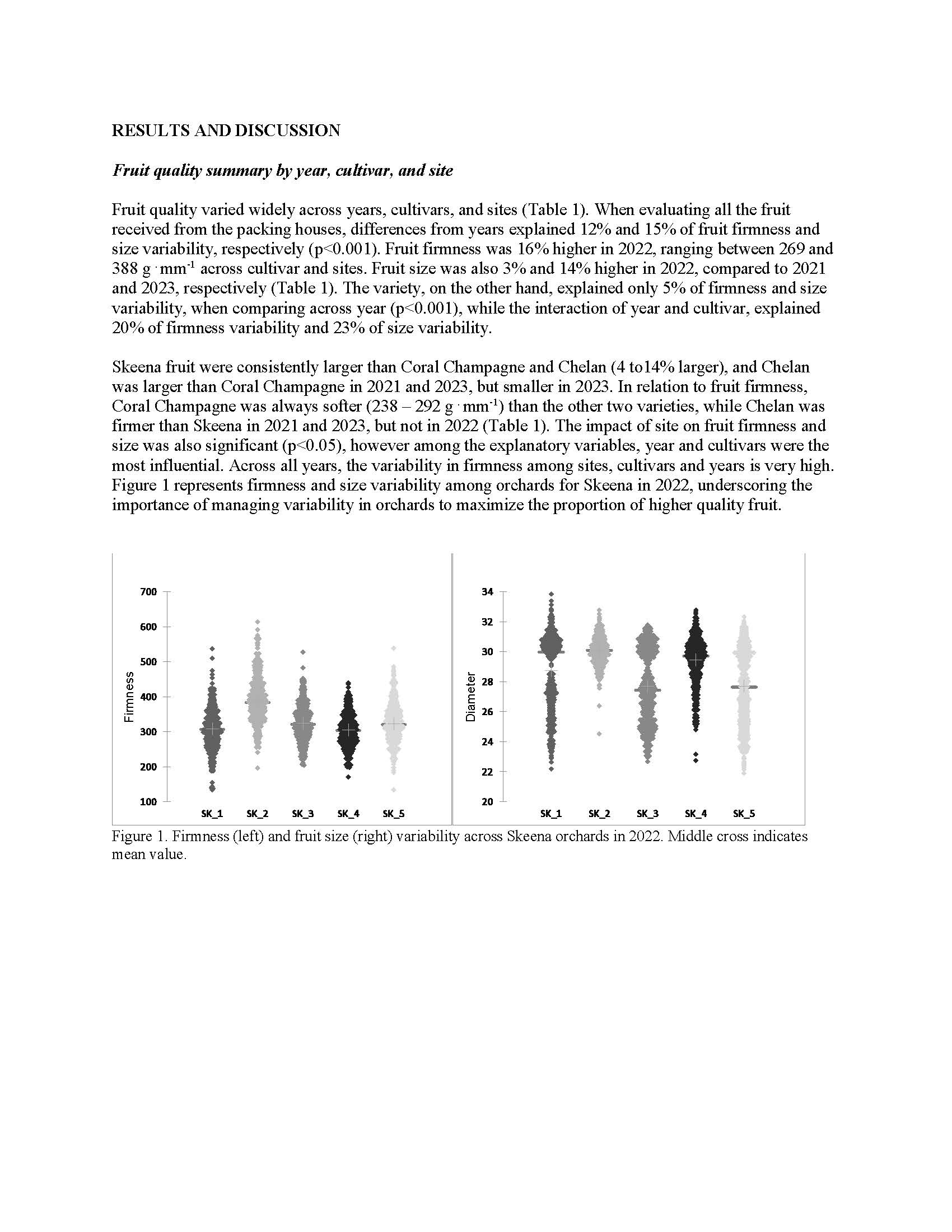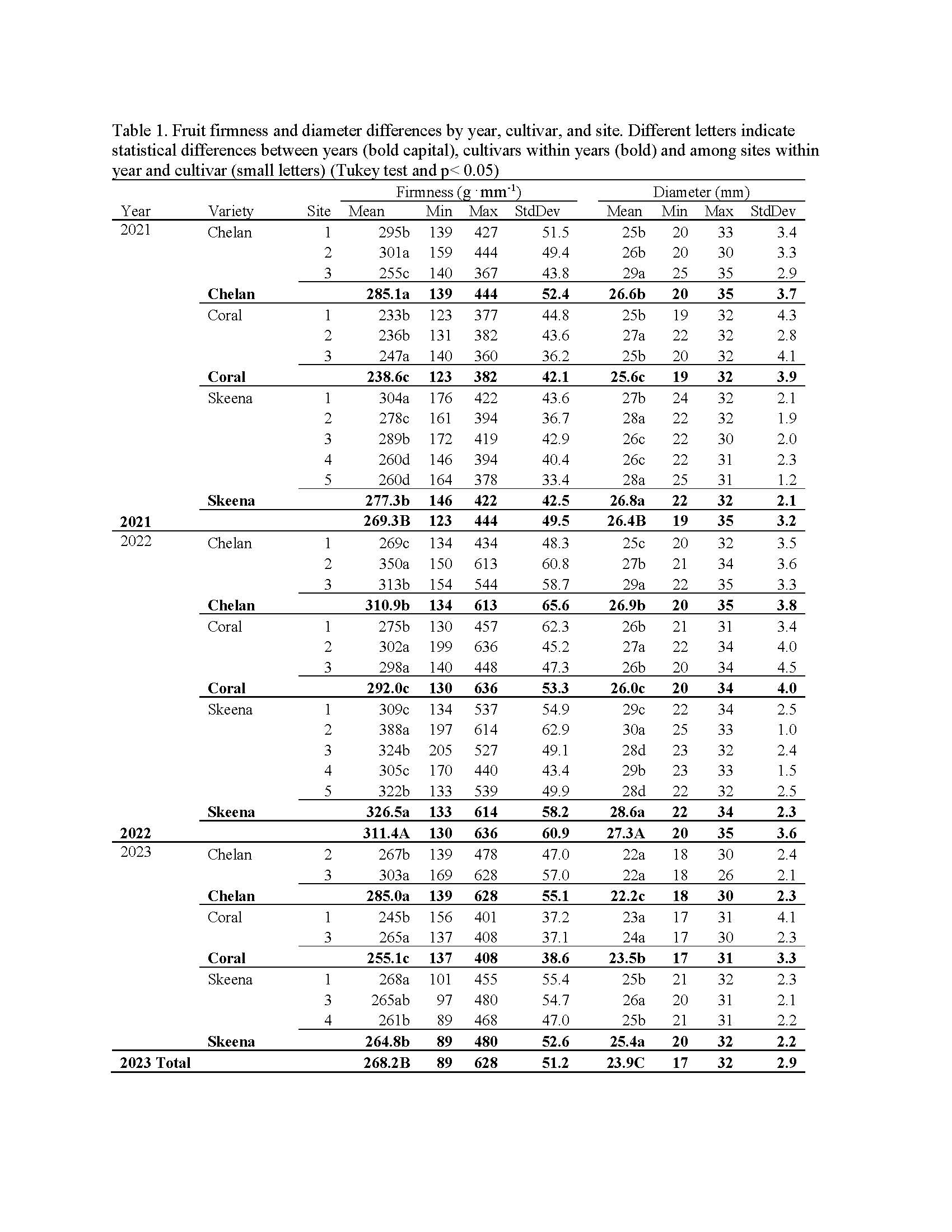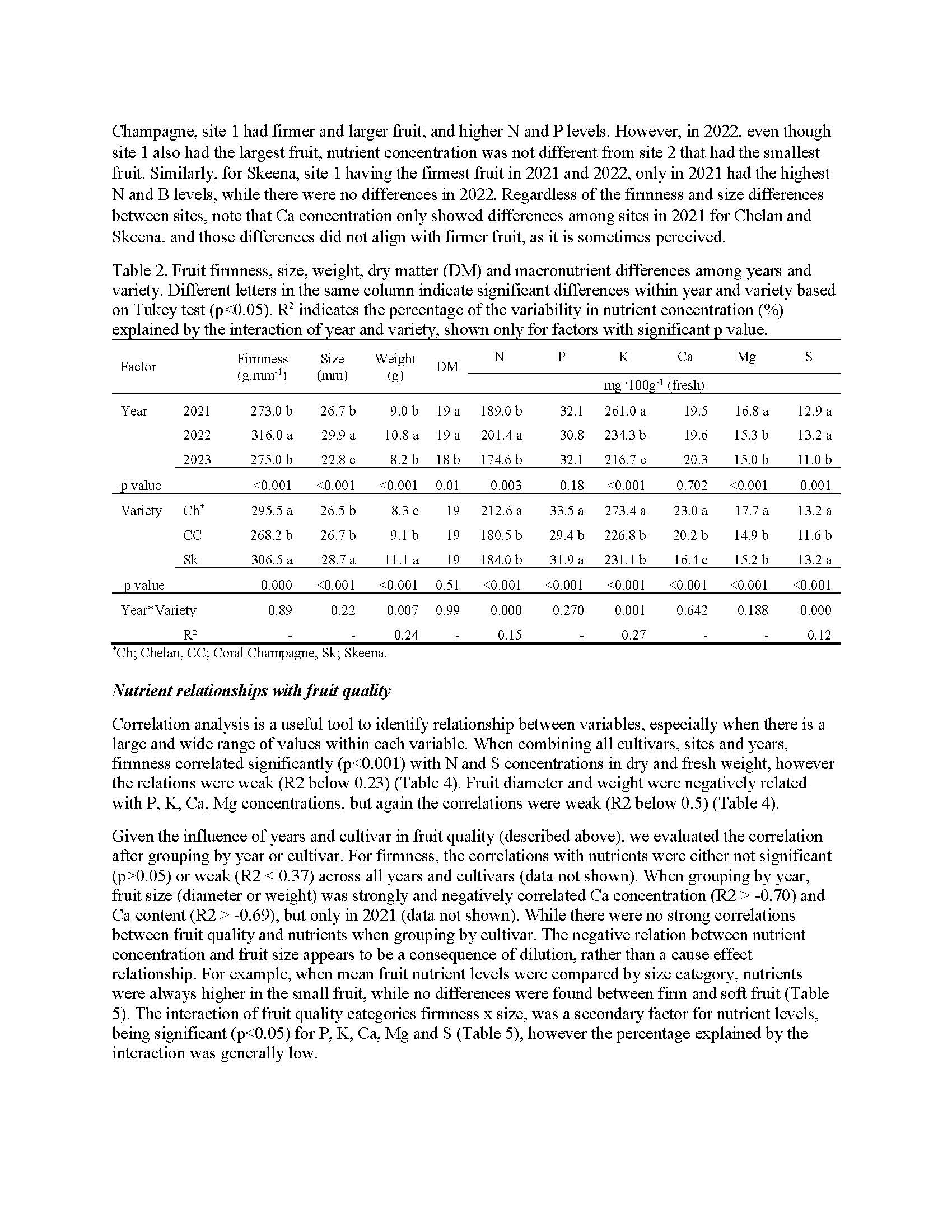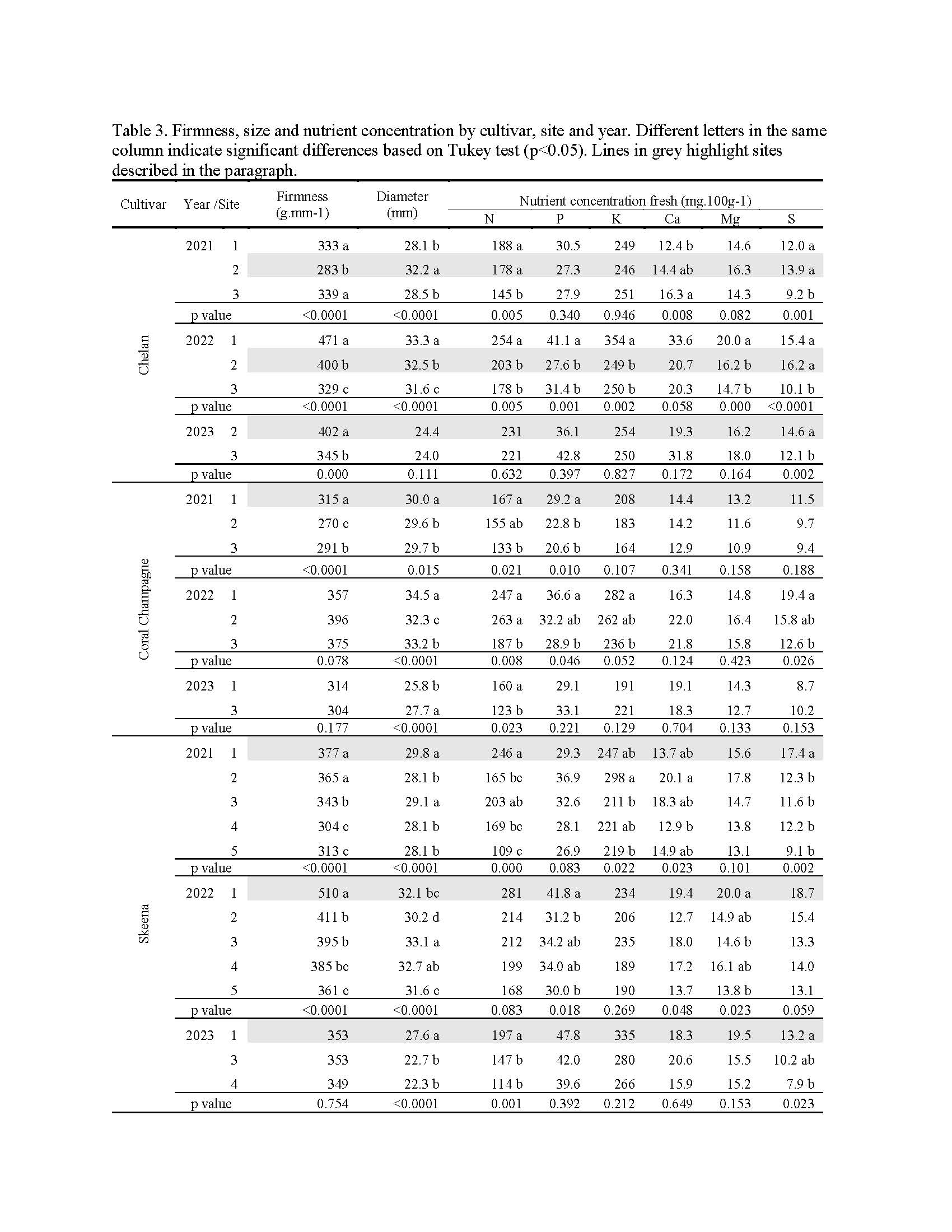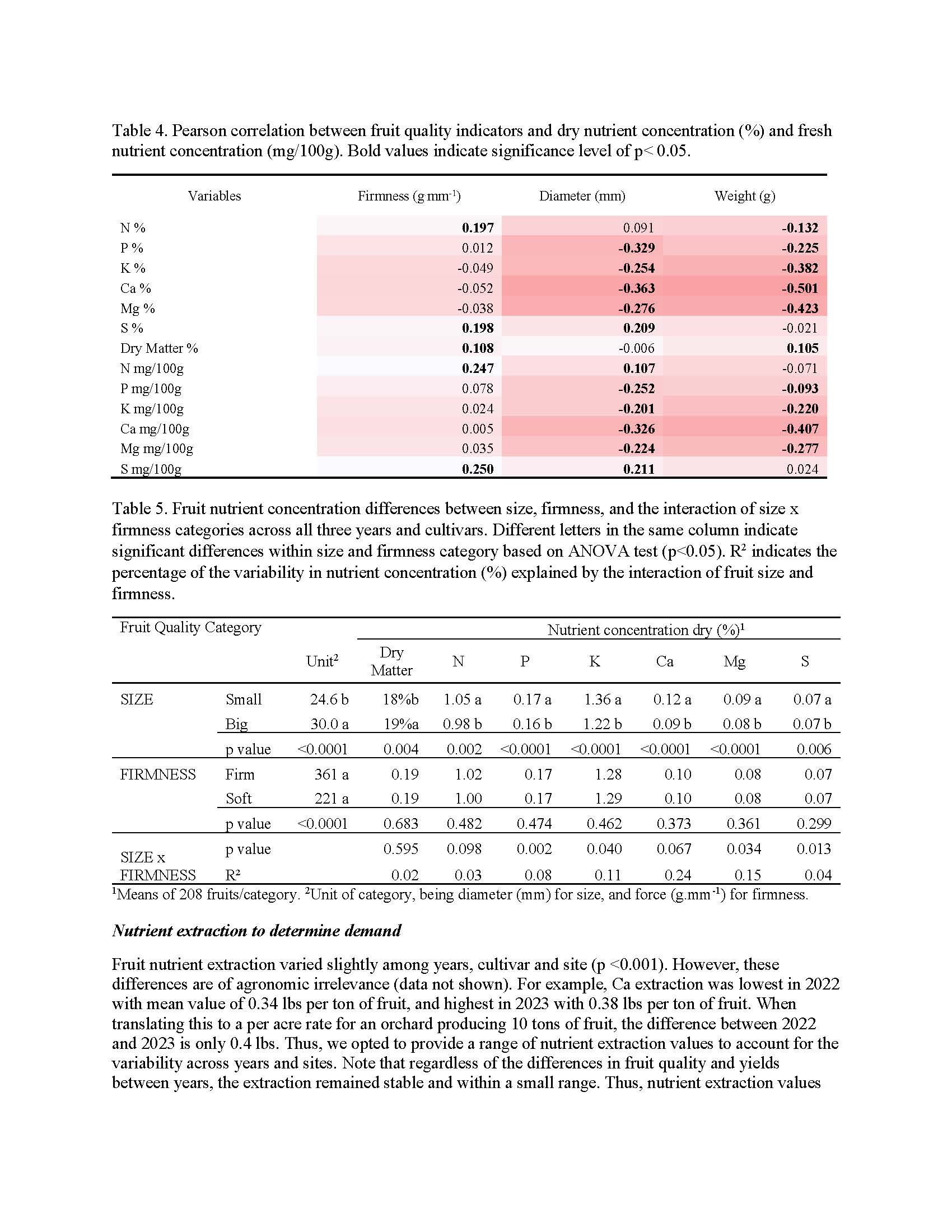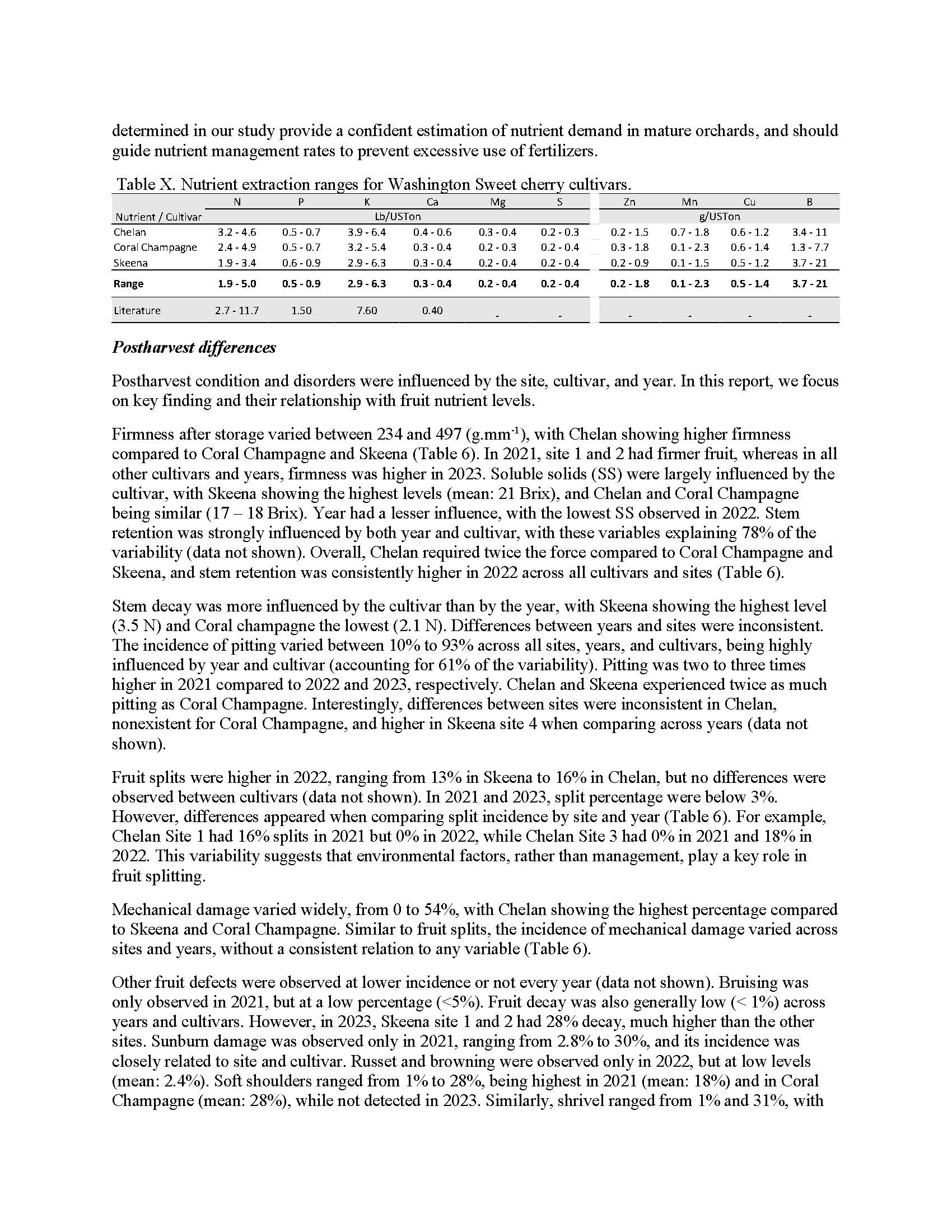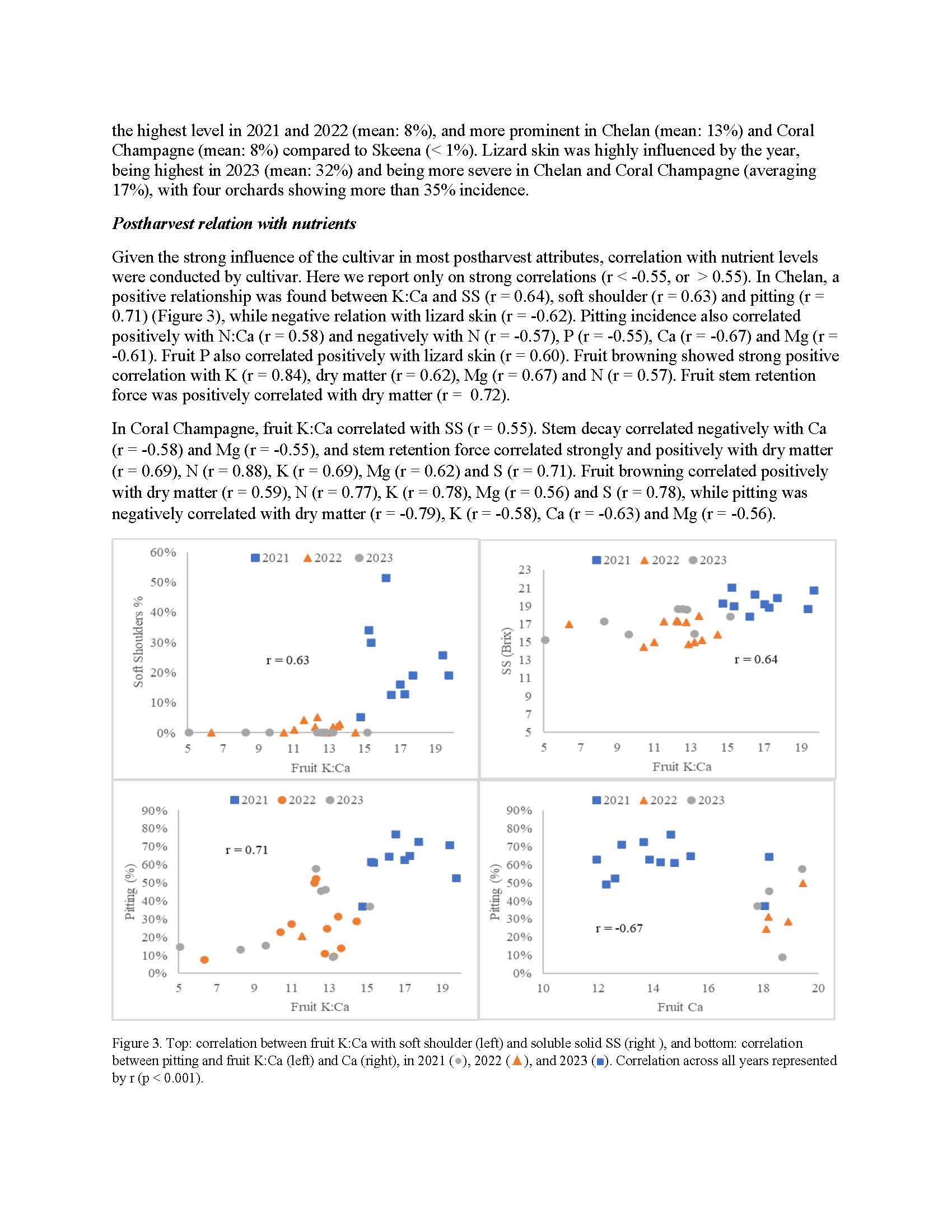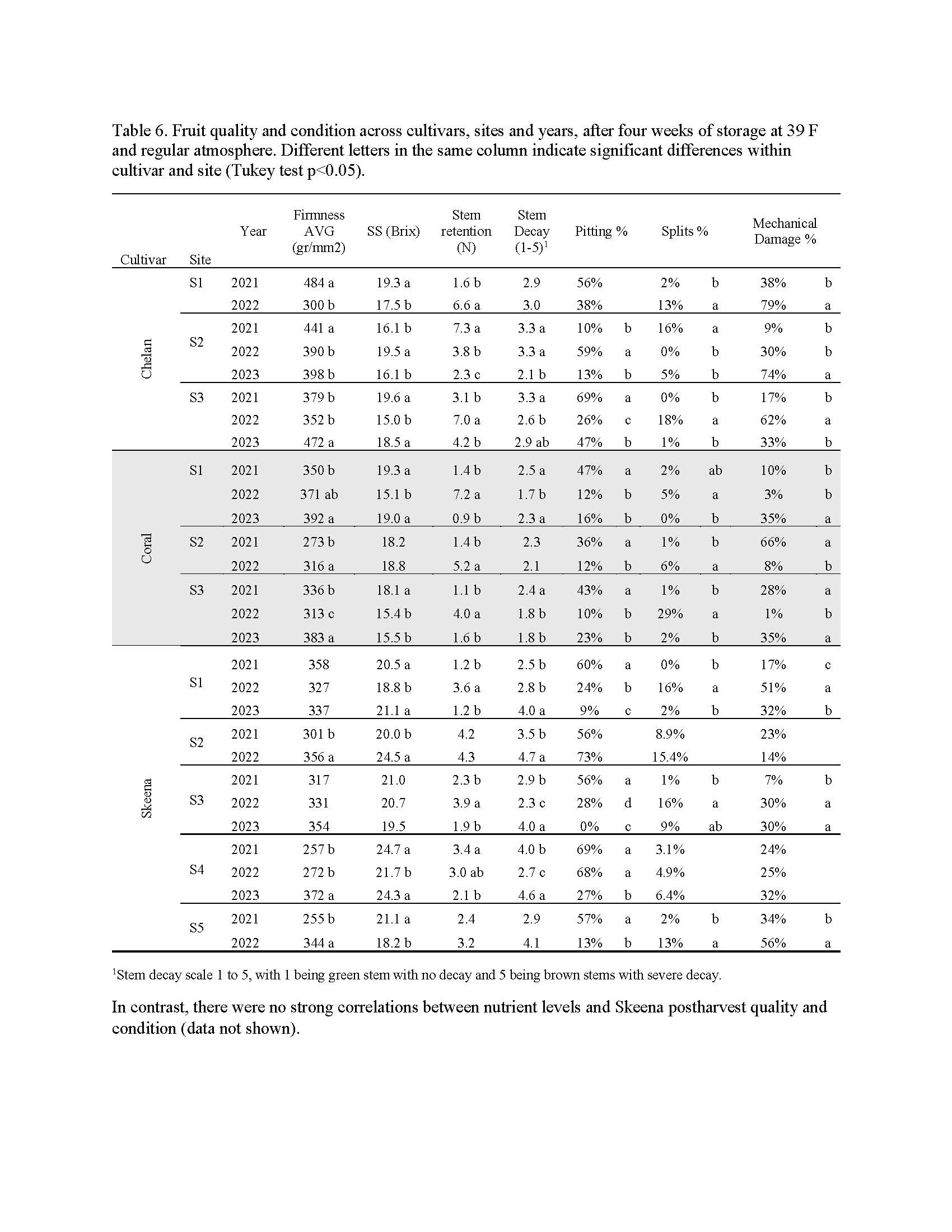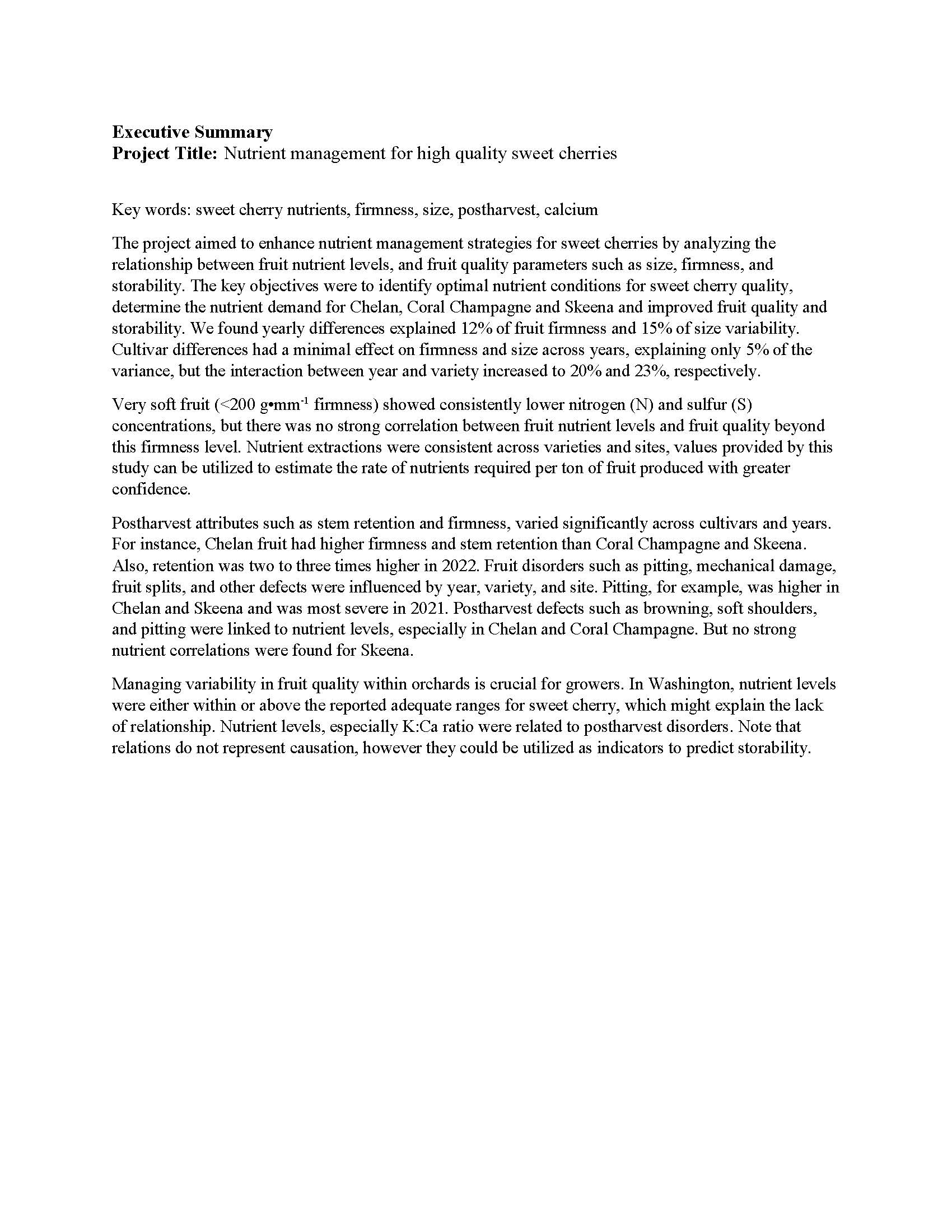Nutrient management for high quality sweet cherries
Author: Bernardita Sallato
Published: 2025
Summary: The project aimed to enhance nutrient management strategies for sweet cherries by analyzing the relationship between fruit nutrient levels, and fruit quality parameters such as size, firmness, and storability. The key objectives were to identify optimal nutrient conditions for sweet cherry quality, determine the nutrient demand for Chelan, Coral Champagne and Skeena and improved fruit quality and storability. We found yearly differences explained 12% of fruit firmness and 15% of size variability. Cultivar differences had a minimal effect on firmness and size across years, explaining only 5% of the variance, but the interaction between year and variety increased to 20% and 23%, respectively. Very soft fruit (<200 g•mm-1 firmness) showed consistently lower nitrogen (N) and sulfur (S) concentrations, but there was no strong correlation between fruit nutrient levels and fruit quality beyond this firmness level. Nutrient extractions were consistent across varieties and sites, values provided by this study can be utilized to estimate the rate of nutrients required per ton of fruit produced with greater confidence. Postharvest attributes such as stem retention and firmness, varied significantly across cultivars and years. For instance, Chelan fruit had higher firmness and stem retention than Coral Champagne and Skeena. Also, retention was two to three times higher in 2022. Fruit disorders such as pitting, mechanical damage, fruit splits, and other defects were influenced by year, variety, and site. Pitting, for example, was higher in Chelan and Skeena and was most severe in 2021. Postharvest defects such as browning, soft shoulders, and pitting were linked to nutrient levels, especially in Chelan and Coral Champagne. But no strong nutrient correlations were found for Skeena. Managing variability in fruit quality within orchards is crucial for growers. In Washington, nutrient levels were either within or above the reported adequate ranges for sweet cherry, which might explain the lack of relationship. Nutrient levels, especially K:Ca ratio were related to postharvest disorders. Note that relations do not represent causation, however they could be utilized as indicators to predict storability.
Keywords:

